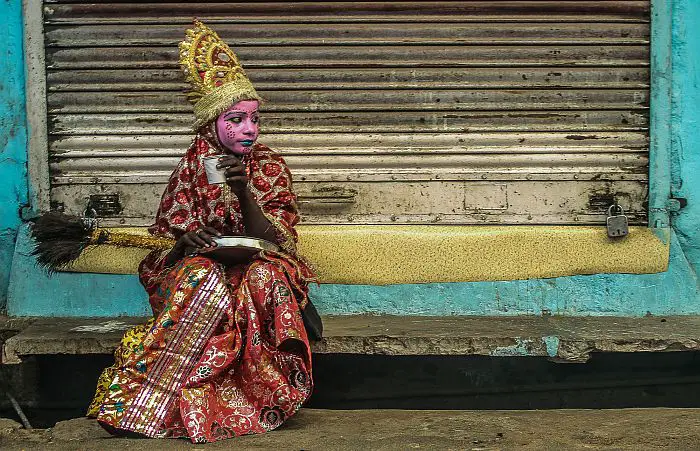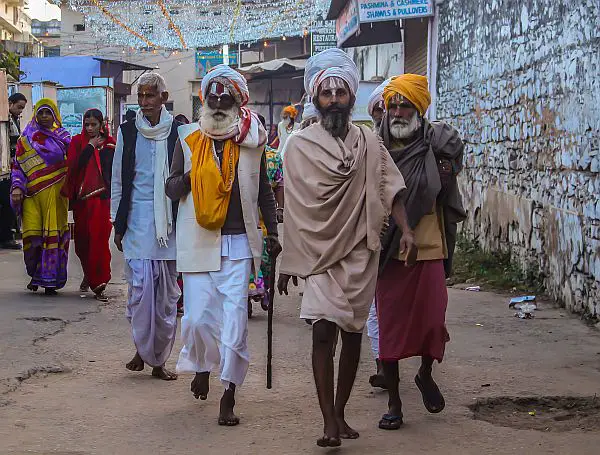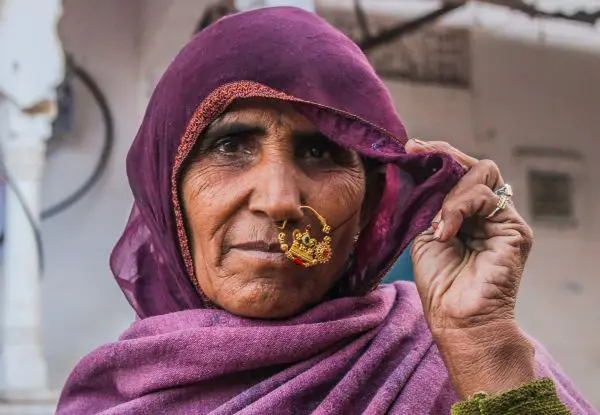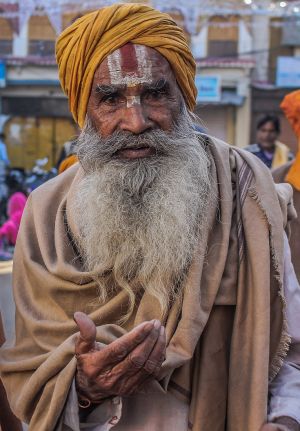She Called Me Bindaas
By Melissa Adams
When an American writer meets an Indian doctor in a photography workshop, the focus shifts from the annual Pushkar Camel Festival to love and marriage through an Indian lens.

In a gaggle of bronze-skinned, Hindi-speaking men from all over the world's second-most populous country, Gita stood out. Smartly dressed in casual Western wear similar to my own, she'd come to Pushkar in India's state of Rajasthan, possibly its most colorful, for the same visual feast that had drawn me and a dozen or so other amateur photographers to a workshop based in the tiny desert town. While we hailed from different hemispheres, we shared a common goal: capturing the world's largest livestock trading fair cum religious festival in digital images.

We were hardly alone. For the last century, the annual Pushkar Camel Festival has drawn some 50,000 brushed and bedazzled camels, horses, sheep, goats and cattle to an epic spectacle on the edge of Rajasthan's Thar Desert. The trading fest coincides with a religious celebration in the Hindu month of Kartika, usually late October–November. Amidst the camel traders, we focused on droves of pilgrims wrapped in vibrant saris and turbans, descending on Pushkar to worship at one of only two temples in India dedicated to Lord Brahma. Many were barefoot; others wore flip-flops on journeys from faraway villages, apparently fueled by religious devotion.

A Desert Extravaganza
In our week at the festival, we saw the arid Thar Desert transform into a dusty expanse of livestock, traders, market stalls, religious pilgrims, camping families and photographers eager to document the spectacle. As dawn broke each day, hot air balloons rose over the sweeping dunes. They filled the air with colors as vibrant as those worn by Rajasthani women ornamented from nose to toe in gold.
From towns all over India, musicians, magicians, acrobats, belly dancers and snake charmers arrived to dazzle onlookers and earn a few rupees from tourists. Anyone not performing, trading livestock, shopping for saddles or browsing through piles of bangles had plenty to see. They might be caught ogling camel races, mustache-twirling feats, turban-tying contests or barefoot girls traversing taut ropes, laden with jugs and other stunt paraphernalia.
On one afternoon, a prepubescent seductress danced before me as I sat cross-legged on the blanket where her family's tent was pitched. Clad in a luminous ruby sari embroidered with gold, she moved to the beat of a nomadic orchestra in a hypnotic rhythm that belied her years. A turbaned toddler covered from barefoot toes to dirty knees in desert sand joined her, prancing about in steps less practiced than his sister's.

I'd been recruited to watch the performance by their mother, an entrepreneurial Indian woman married to the musician who played lead mandolin in the onsite band. Alas, the full-time enterprise yielded no money to send their five children to school. As the young siblings shimmied about, I watched a traditional lifestyle far from my Western world emerge from my front row seat on the sand.
East Meets West in India
While Pushkar was not my first stop in India, it was my first chance to exchange ideas with an educated Indian woman. Sporting a tailored leather jacket, jeans and a t-shirt, Gita could pass for a Westerner were it not for her frequent lapses into Hindi. An obstetrician driven by rivalry with an older sister to became a doctor, she wore no nose ring, toe ring, Bindi dot, wedding band or other symbolic ornamentation. There was nary a sari or Punjabi suit (a long tunic worn over narrow trousers, often sported by Bollywood actresses) in her wardrobe. As we roamed the Pushkar fairgrounds, she painted images of the evolving state of love and marriage in her country that gave new dimension to scenes we captured with our cameras.

Even today, much of Indian society views marriage as a social and cultural obligation that lasts a lifetime—reflected in a divorce rate of under 2%, versus around 40% in the US. While such statistics can measure neither the happiness of couples who make up the 98% of intact Indian marriages nor the extent to which abuse or other dysfunction keeps them together, they do reveal that family unity across multiple generations is top priority in India. Personal preference is a distant second. Marriage is a package deal, as a bride often moves in with her new husband's family and adopts it as her own. Contrast that with the Western notion of marriage as an individual choice leading to living happily ever after the vows are sworn.
Gita, it seems, was more progressive than traditional Indian brides. Her marriage to an endocrinologist was based on love, not parental arrangement, she alleged. Whether at home caring for their young son or the medical clinic the couple manages, her role is anything but subservient. Yet our fellow photography students, including several better acquainted with the 40-something obstetrician than me, suggested Gita's choices were inevitably influenced by her family's wishes, as well as the stars. In India, few marriages take place before the prospective couple’s horoscopes are analyzed and the pair deemed a suitable match.
Copyright (C) Perceptive Travel 2017. All rights reserved.
- Gawking at Glaciers in Wild Alaska by Tim Leffel
- Hiding the Cannoli in Sicily by Kirsten Koza
- Into a Lost World: El Triunfo, Chiapas by Nick Rider
- Travel Book Reviews

